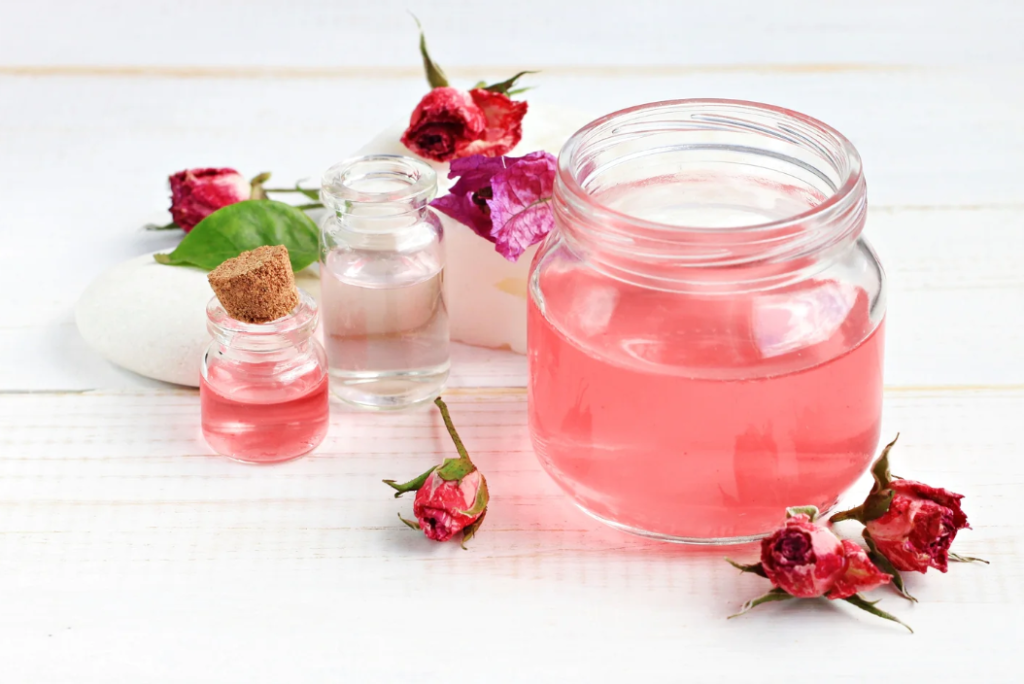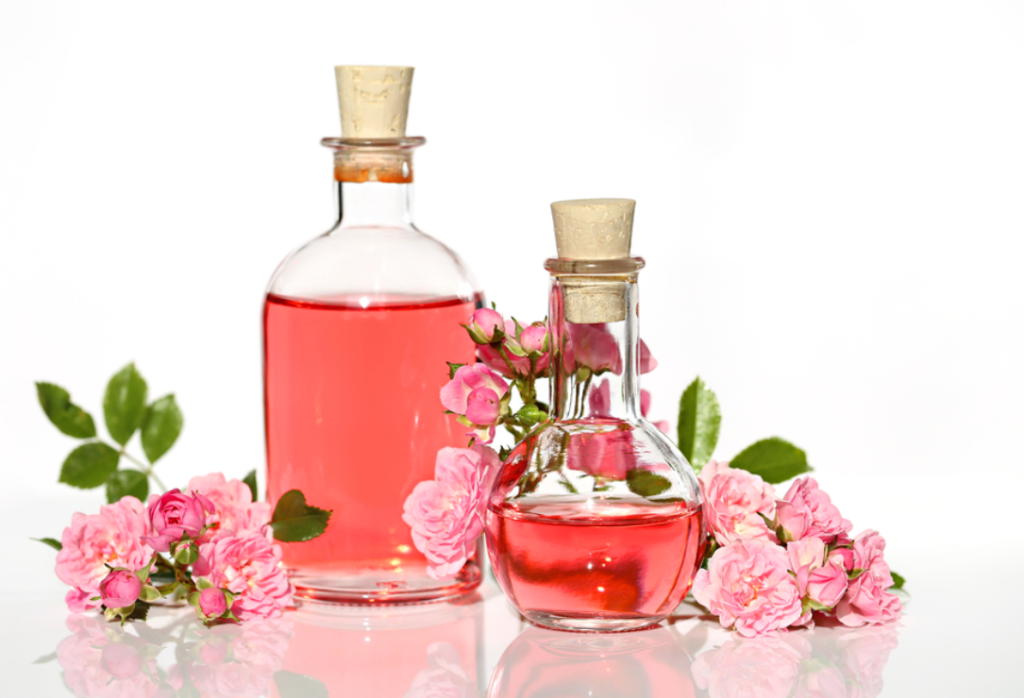How to Make Rose Water at Home? Rose water is a popular ingredient in many skin care and beauty products. It is known for its hydrating, soothing and anti-inflammatory properties. While you can easily purchase rose water from the store, making it at home is also a simple and cost-effective option. All you need is some fresh roses and distilled water. In this article, we will guide you through the step-by-step process of making rose water at home, so that you can enjoy its benefits in your daily beauty routine.
A fragrant, delicious alternative to store-bought rose water, homemade rose water is easy and inexpensive to make. It can be used as a toner for your face, an ingredient in desserts or simply a spritz around the home. It’s not as potent as rose water made through distillation, but it’s a simple process that results in an incredibly fresh, fragrant product.
How to Make Rose Water?

Here are the steps for making rose water at home:
- Choose fresh, organic roses that have not been sprayed with pesticides or other chemicals.
- Remove the petals from the rose flowers and rinse them well under running water to remove any dirt or debris.
- Place the petals in a large pot and pour enough distilled water over them to cover the petals by about an inch.
- Bring the water to a boil over high heat, then reduce the heat to low and simmer the petals for about 30 minutes.
- Allow the mixture to cool completely, then strain the liquid through a fine-mesh strainer or cheesecloth into a clean glass jar.
- Discard the petals and store the rose water in the refrigerator for up to two weeks.
You can use this homemade rose water as a natural toner, facial mist, or hair rinse. It’s also a great addition to bathwater for a relaxing and fragrant soak.
When making rose water at home, it’s important to ensure that the roses you are using have not been treated with any pesticides or chemical fertilizers. This is because these chemicals can be harmful to both humans and animals.
In fact, roses themselves are not toxic to cats, but some of the plants commonly used in gardens and floral arrangements can be. Certain types of lilies, for example, can be highly toxic to cats if ingested.
If you have cats in your home, it’s a good idea to research which plants are safe for them and to avoid using any potentially harmful flowers or plants in your homemade rose water.
By taking care to use only organic and pesticide-free roses in your rose water, you can ensure that you are creating a safe and natural product that is beneficial for both you and your furry friends.
1. Boil the Rose Petals
Rose water can be used to add a delicate rose scent and flavor to a variety of dishes. It’s easy to make at home and has many health benefits.To make rose water, you’ll need rose petals and distilled water. You can use fresh or dried rose petals.
First, you’ll want to clean your rose petals and remove the dead and damaged parts of the flowers. You can do this by hand or with a flower extractor. Once your petals are clean, place them in a pot or saucepan with enough distilled water to cover them completely. Simmer them for about 10-20 minutes and strain.
If you don’t have the time or energy to simmer, there are two other ways to make rose water: distilling and freezing. Distilling requires a bit more work and produces a clearer color, but it also has more natural benefits than the steam method. You’ll need rose petals, distilled water, ice, a glass bowl, large pot, strainer and a lid.
2. Cool
Having your own home-made rose water is a great way to enjoy the sweet, delicate scent of this popular flower. This easy-to-make natural beauty ingredient is also a fantastic addition to your hair care routine, as it can help moisturize dry and damaged hair, reduce frizz, promote scalp health, and calm inflammation and dandruff.
You can make rose water using a simmering or distillation method. In either case, you will need a large pot and a heat-proof bowl to place the rose petals in, and distilled water to cover them.
To make the simmering method, start by bringing the water to a boil in your saucepan, then add the rose petals. Once the petals have simmered for 10 minutes or so, remove the pan from the heat and strain the mixture through a fine mesh strainer.
Then, you can bottle the finished rose water and enjoy it as a hydrating facial mist or a refreshing spring/summer face spray!
3. Strain

Rose water is an essential ingredient in many beauty products, including facial toner and hair perfume. It is also used to soothe sunburns and skin irritations. It is a wonderful mood enhancer and can be misted on bed linens before bedtime or added to a bathwater for relaxation.
It can be used to add a delicate floral flavor to desserts and sweet recipes. It can also be used to compliment the flavors of savory dishes.
If you have the time, the easiest method to make rose water is by simmering your petals in water and then straining it. This method will last for a longer period of time and doesn’t require refrigeration.
Another option is to mix a few drops of essential oil with rose water, and then pour it into a glass bottle or jar. This method will keep for longer than the simmering method and is easier to prepare.
4. Bottle
Rose water is an incredibly versatile ingredient. It can be used for skin care, cooking, and even aromatherapy.
To keep it fresh, you should store it in a glass bottle or spray container with a lid. You can also place it in a refrigerator for up to a year.
If you want to extend the shelf life of your homemade rose water, it’s a good idea to add a preservative. You can use citric acid and potassium sorbate, both of which are natural products that are effective in preserving homemade hydrosols without using harsh or toxic chemicals.
When choosing your roses for making rose water, you should make sure that they are pesticide-free and organically grown. Conventional roses from the grocery store or floristry shop usually contain a wide array of toxic chemicals that can be harmful to your health.
How to Make Rose Water at Home Conclusion
In conclusion, making rose water at home is a simple and cost-effective way to enjoy its benefits in your daily skincare routine. By following the steps outlined in this article, you can create your own natural and chemical-free rose water using just fresh roses and distilled water.
Rose water has been used for centuries as an ingredient in beauty products due to its hydrating, soothing, and anti-inflammatory properties. By making your own rose water, you can be sure that you are using a high-quality product on your skin that is free from any additional chemicals or preservatives.
Whether you use it as a toner, facial mist, or hair rinse, rose water is a versatile and valuable addition to any beauty routine. So why not give it a try and create your own homemade rose water today?
How to Make Rose Water at Home FAQ
Can I make my own rose water for my face?
Yes, you can definitely make your own rose water for your face. In fact, making your own rose water at home is a great way to ensure that you are using a natural and chemical-free product on your skin.
To make rose water for your face, simply follow the steps listed above in my previous response. Once you have strained the liquid through a fine-mesh strainer or cheesecloth into a clean glass jar, you can transfer it to a spray bottle for easy application.
To use, spritz the rose water onto your face after cleansing as a natural toner. You can also use it throughout the day as a refreshing facial mist to hydrate and soothe your skin. Rose water is gentle on all skin types and helps to balance the skin’s pH levels, making it a great addition to any skincare routine.
Can you use regular water to make rose water?
While you can technically use regular tap water to make rose water, it is best to use distilled water instead. This is because distilled water has been purified and stripped of any minerals or impurities that may be present in regular tap water.
Using distilled water will ensure that your rose water is free from any additional substances that could potentially irritate your skin. In addition, using distilled water will also help to extend the shelf life of your homemade rose water by preventing the growth of bacteria.
So, if possible, I would recommend using distilled water to make your own rose water. Distilled water can usually be found at most grocery stores or online retailers.
How is natural rose water made?
Natural rose water is made by steam-distilling fresh rose petals. This process involves heating the petals with water and then collecting the steam that is released. Here are the steps involved in making natural rose water:
- Choose fresh, organic roses that have not been treated with any pesticides or chemical fertilizers.
- Remove the petals from the roses and rinse them thoroughly under running water to remove any dirt or debris.
- Place the petals in a large pot and add enough water to cover the petals by about an inch.
- Bring the water to a boil over high heat, then reduce the heat to low and simmer for 20-30 minutes.
- As the petals are heated, they release their essential oils and other plant compounds into the water. The steam that is produced during this process is collected and condensed back into a liquid form.
- The resulting liquid is natural rose water, which can be strained and stored in a clean glass bottle.
It’s important to note that making natural rose water using the steam distillation method requires specialized equipment and can be quite time-consuming. For this reason, many people choose to purchase commercially available rose water instead of making it themselves.









